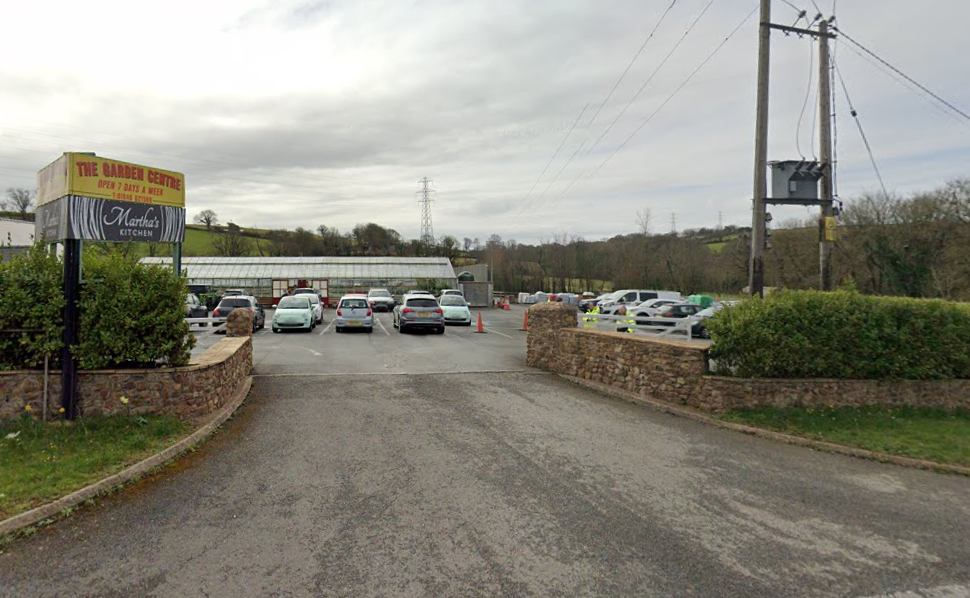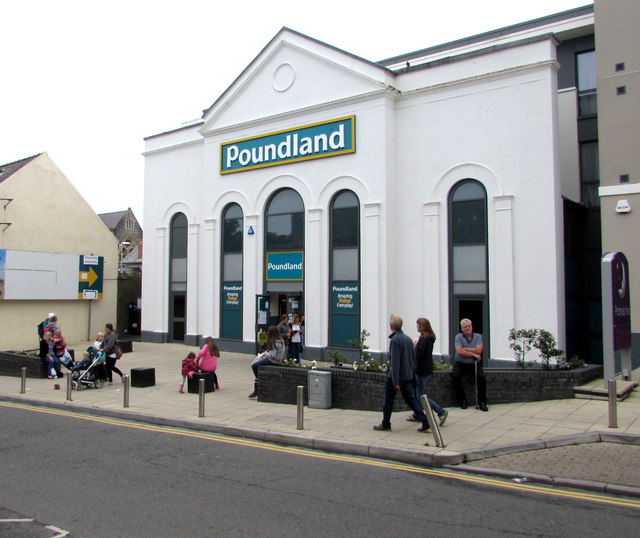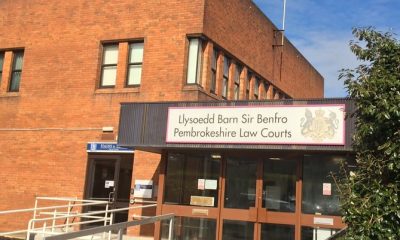Business
Comparing Bitcoin to Gold as an Investment

In the realm of opportunity investments, Bitcoin and gold stand out as wonderful properties with particular characteristics and investment appeals. While gold has long been taken into consideration as a conventional safe-haven asset and save of price, Bitcoin, a particularly new entrant to the financial landscape, has garnered interest for its virtual shortage and capability as a hedge in opposition to inflation and economic uncertainty. This article explores the similarities, variations, and issues of comparing Bitcoin to gold as funding alternatives. Immediate Trevixor 3.2, an investment education firm connecting traders with educational experts, offers insights that can aid investors in understanding the nuances of Bitcoin and gold as investment options.
Understanding Gold: A Timeless Safe Haven
Gold has served as a store of price and medium of trade for millennia, dating back to historic civilizations. Its enchantment as an investment stems from several key attributes:
Tangibility and physicality:
Gold is a tangible asset with an intrinsic price. Investors can bodily own gold in the form of bars, coins, or rings, which adds a layer of safety and tangibility to its investment appeal.
Historical Store of Value:
Throughout history, gold has maintained its shopping energy over lengthy periods. It is often seen as a hedge against inflation, currency devaluation, and geopolitical instability, making it a favored asset during times of economic uncertainty.
Diversification Benefits:
Gold’s charge moves often showcase a low correlation with other monetary properties, which include stocks and bonds. As such, investing gold in a funding portfolio can probably lessen usual portfolio volatility and enhance diversification.
Bitcoin: The Digital Gold of the Modern Era?
Bitcoin, brought in 2009 via Satoshi Nakamoto, represents a paradigm shift in the idea of cash and keeping value. Often known as “virtual gold,” Bitcoin shares some traits with conventional gold, even introducing precise features:
Decentralization and digital scarcity:
Bitcoin operates on a decentralized blockchain network, making it immune to manipulation with the aid of any single entity, including a central authority or principal financial institution. Similar to gold, Bitcoin has a finite deliver cap of 21 million coins, which complements its scarcity and ability fee proposition.
Portability and accessibility:
Unlike physical gold, which calls for secure storage and transportation, bitcoin exists in its basic form in digital form. It can be saved and transferred electronically throughout borders with relative ease, providing more suitable accessibility to global traders.
Volatility and Price Potential:
Bitcoin’s fee is understood for its volatility, with good-sized fee fluctuations happening over short durations. While this volatility comes with risks, it also gives possibilities for high returns, attracting speculative buyers.
Comparing Bitcoin and Gold: Key Considerations
When evaluating Bitcoin and gold as investment alternatives, numerous factors come into play:
Store of Value and Inflation Hedge:
Both Bitcoin and gold are taken into consideration as potential stores of value and hedges in opposition to inflation. Gold’s historic tune document over centuries helps its role as a reliable shop of wealth all through financial uncertainty. Bitcoin, whilst notably younger, is increasingly more visible as a virtual alternative with similar inflation-hedging properties due to its shortage and decentralized nature.
Risk and Volatility:
Gold usually reveals a decrease volatility compared to Bitcoin, which is thought to be due to its charge swings. Investors in search of balance and wealth protection may want gold, while those snug with a higher chance and potential rewards can also lean closer to Bitcoin.
Adoption and Acceptance:
Gold enjoys tremendous reputation and recognition as a store of value throughout cultures and economies globally. Bitcoin’s reputation has been developing gradually but stays much less mainstream as compared to gold. Factors including regulatory trends, institutional adoption, and public perception play sizable roles in Bitcoin’s direction and broader reputation.
Liquidity and Market Accessibility:
Gold markets are rather liquid, with established exchanges and bodily markets facilitating trading and funding. Bitcoin markets, while increasingly liquid, can enjoy intervals of liquidity crunches or volatility spikes due to market dynamics and regulatory uncertainties.
Conclusion
Bitcoin and gold represent awesome yet complementary strategies for diversifying and safeguarding funding portfolios. While gold boasts millennia of historic precedent as a store of value and hedge against monetary volatility, Bitcoin introduces progressive principles of digital shortage and decentralized finance. As traders navigate the complexities of the modern-day monetary panorama, knowledge of the precise traits, risks, and capacity rewards of both assets is essential. By incorporating Bitcoin and gold strategically into an investment portfolio, investors can potentially enhance resilience, mitigate danger, and capitalize on numerous opportunities in the evolving international economic system.
Business
Independent brewers join call for business rates relief as pub closures feared

INDEPENDENT brewers have joined growing calls for urgent, pub-specific relief on Business Rates amid fears that community pubs across west Wales and beyond could be forced to close.
The Society of Independent Brewers and Associates (SIBA) has warned that changes announced in the Autumn Budget will see pub costs rise sharply over the next three years, with the average pub facing a 76% increase in Business Rates. By comparison, large warehouse-style premises operated by online and technology giants are expected to see increases of around 16%.
The issue will be discussed at a meeting taking place on Monday in Saundersfoot, where local publicans, small brewers and business representatives are due to come together to examine the impact of rising Business Rates and escalating operating costs. The meeting is expected to focus on the future sustainability of community pubs, particularly in coastal and rural areas where they often act as vital social hubs as well as key local employers.
Independent breweries are particularly exposed, SIBA says, as the vast majority of their beer is sold through local community pubs. Many small breweries also operate their own pubs or taprooms, meaning they are hit twice by rising rates. Some independent brewers have reported rateable value increases of up to 300%, creating new costs they say will be extremely difficult to absorb.
New industry research published on Thursday (Dec 12) suggests that introducing a pub-specific Business Rates relief of 30% from April 1, 2026 could protect around 15,000 jobs currently under threat in the pubs sector and help prevent widespread closures.
The call for action follows an open letter sent last week by SIBA’s board, expressing deep concern at the impact of the Budget’s Business Rates decisions on the hospitality sector.
Andy Slee, Chief Executive of SIBA, said: “The last orders bell is ringing very loudly in our community pubs after the shock changes to Business Rates in the Budget.
“Publicans and brewers feel badly let down by a system that still isn’t fairly addressing the imbalance between big global tech companies and small business owners.
“We were promised proper reform of Business Rates in the Labour manifesto last year and a rebalancing of the tax regime, but this has not been delivered. Pubs therefore need urgent help to address the planned increase in costs through a pub-specific relief, followed by full and meaningful reform.”
Those attending Monday’s meeting in Saundersfoot are expected to consider how local voices can feed into the national debate and press for urgent action to protect community pubs across Pembrokeshire.

Business
Cosheston Garden Centre expansion approved by planners

PLANS to upgrade a garden centre on the main road to Pembroke Dock have been given the go-ahead.
In an application to Pembrokeshire County Council, submitted through agent Hayston Developments & Planning Ltd, Mr and Mrs Wainwright sought permission for upgrade of a garden centre with a relocated garden centre sales area, additional parking and the creation of ornamental pond and wildlife enhancement area (partly in retrospect) at Cosheston Garden Centre, Slade Cross, Cosheston.
The application was a resubmission of a previously refused scheme, with the retrospective aspects of the works starting in late 2023.
The site has a long planning history, and started life as a market garden and turkey farm in the 1980s, and then a number of applications for new development.
A supporting statement says the previously-refused application included setting aside a significant part of the proposed new building for general retail sales as a linked farm shop and local food store/deli in addition to a coffee bar.
It was refused on the grounds of “the proposal was deemed to be contrary to retail policies and the likely impact of that use on the vitality and viability of nearby centres,” the statement said, adding: “Secondly, in noting that vehicular access was off the A 477 (T) the Welsh Government raised an objection on the grounds that insufficient transport information had been submitted in respect of traffic generation and highway safety.”
It said the new scheme seeks to address those issues; the development largely the same with the proposed new garden centre building now only proposed to accommodate a relocated garden centre display sales area rather than a new retail sales area with other goods, but retaining a small ancillary coffee bar area.
“Additional information, in the form of an independent and comprehensive Transport Statement, has now been submitted to address the objection raised by the Welsh Government in respect of highway safety,” the statement said.
It conceded: “It is acknowledged that both the creation of the ornamental pond and ‘overspill’ parking area do not have the benefit of planning permission and therefore these aspects of the application are ‘in retrospect’ and seeks their retention.”
It finished: “Essentially, this proposal seeks to upgrade existing facilities and offer to the general public. It includes the ‘relocation’ of a previously existing retail display area which had been ‘lost’ to the ornamental pond/amenity area and to provide this use within the proposed new building and moves away from the previously proposed ‘farm shop’ idea which we thought had merit.
“This revised proposal therefore involves an ‘upgrading’ rather than an ‘expansion’ of the existing garden centre use.”
An officer report recommending approval said that, while the scheme would still be in the countryside rather than within a settlement boundary, the range of goods sold would be “typical of the type of goods sold in a garden centre and which could be sold elsewhere within the garden centre itself,” adding: “Unlike the recent planning application refused permission it is not intended to sell delicatessen goods, dried food, fruit and vegetables, pet products and gifts.”
It added that a transport statement provided had been reviewed by the Welsh Government, which did not object on highway grounds subject to conditions on any decision notice relating to visibility splays and parking facilities.
The application was conditionally approved.
Business
Tenby Poundland site could become retro gaming lounge

TENBY’S former Poundland and Royal Playhouse cinema could become a retro computer gaming lounge, plans submitted to the national park hope.
Following a takeover by investment firm Gordon Brothers, Poundland shut 57 stores earlier this year, including Tenby.
Prior to being a Poundland, the site was the Royal Playhouse, which had its final curtain in early 2011 after running for nearly a century.
The cinema had been doing poor business after the opening of a multiplex in Carmarthen; in late 2010 the opening night of the-then latest Harry Potter blockbuster only attracted an audience of 12 people.
In an application to Pembrokeshire Coast National Park, Matthew Mileson of Newport-based MB Games Ltd, seeks permission for a ‘CONTINUE? Retro Gaming Lounge’ sign on the front of the former Gatehouse (Playhouse) Cinema, White Lion Street, most recently used as a Poundland store.
The signage plans form part of a wider scheme for a retro gaming facility at the former cinema site, which has a Grade-II-listed front facade, a supporting statement through agent Asbri Planning Ltd says.
“The subject site is located within the settlement of Tenby along White Lion St. The site was formerly the Gatehouse Cinema and currently operates as a Poundland discount store, which closed on October 18.”
It adds: “This application forms part of a wider scheme for the change of use to the former Gatehouse Cinema. Advertisement consent is sought for a non-illuminated aluminium composite folded panel that will be bolted onto the front façade of the proposed building, in replacement of the existing signage (Poundland).”
It stresses: “It is considered that the proposed advertisement will not have a detrimental impact on the quality of the environment, along with being within a proportionate scale of the building. It is considered that the proposed signage will reflect site function.
“Furthermore, due to the sympathetic scale and design of the sign itself, it is considered that the proposal will not result in any adverse visual amenity impacts.
“The proposal is reduced in sized compared to the existing Poundland advertisement. The sign will not be illuminated. Given the above it is considered that such proportionate signate in association with the proposed retro gaming lounge is acceptable and does not adversely affect visual amenity.”
An application for a retro gaming lounge by MB Games Ltd was recently given the go-ahead in Swansea.
-

 Crime5 days ago
Crime5 days agoPhillips found guilty of raping baby in “worst case” judge has ever dealt with
-

 Crime4 days ago
Crime4 days agoKilgetty scaffolder sentenced after driving with cocaine and in system
-

 Crime4 days ago
Crime4 days agoHousing site director sentenced after failing to provide breath sample following crash
-

 Crime4 days ago
Crime4 days agoMotorist banned for three years after driving with cannabis in system
-

 Education3 days ago
Education3 days agoTeaching assistant struck off after asking pupil for photos of her body
-

 News6 days ago
News6 days agoJury retires tomorrow in harrowing Baby C rape trial
-

 Crime4 days ago
Crime4 days agoMilford Haven pensioner denies exposure charges
-

 Crime22 hours ago
Crime22 hours agoMan spared jail after baseball bat incident in Milford Haven
















